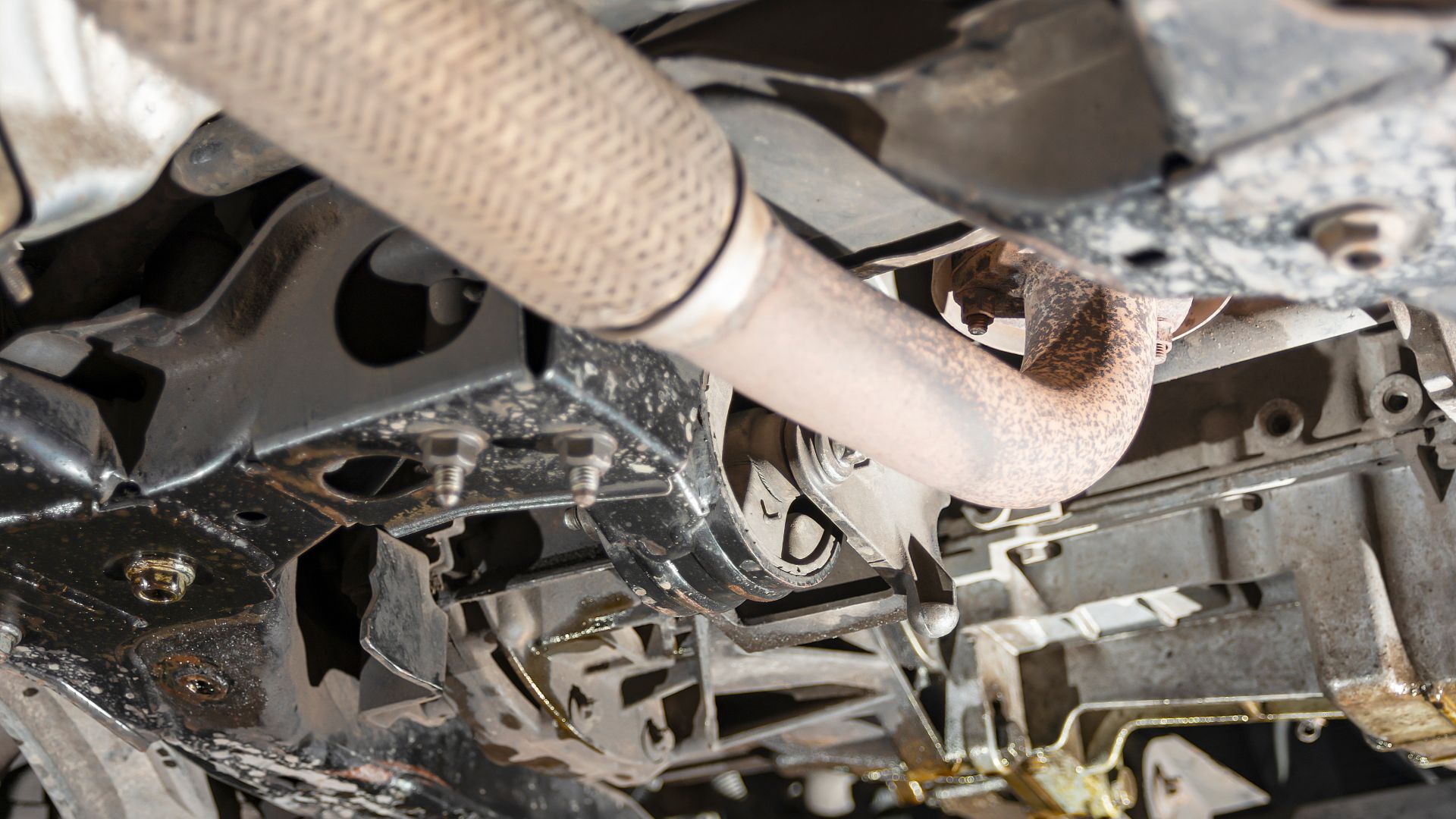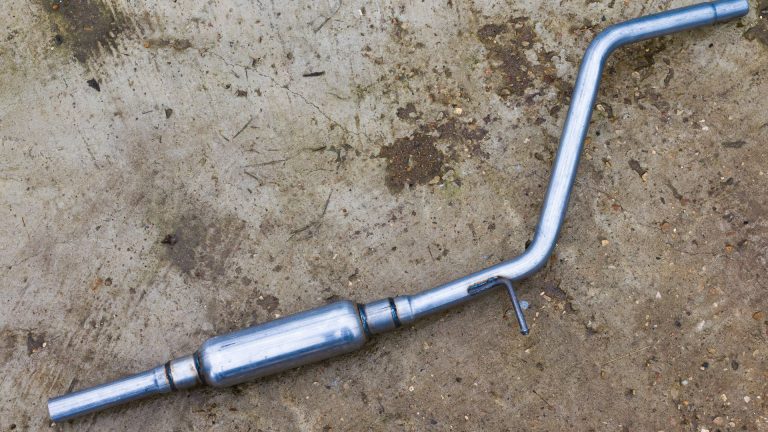Resonator delete explained — all you need to know
Discover the impact of resonator delete on vehicle performance.

Exhaust modifications are probably the most common and popular car modifications. The sheer thrill of driving a loud car makes drivers modify their exhaust to increase the noise. Many drivers also do it to make their cars sound sporty.
One good thing about exhaust sound upgrades is that there are many ways to achieve the desired goal. Some drivers drill holes in their exhaust mufflers or remove their catalytic converters to increase the vehicle’s sound. Another method of improving the exhaust sound is by doing a resonator delete.
A resonator delete involves removing the resonator from under the car. Resonators are part of the exhaust system, and they help to even and smoothen the exhaust sound. If you need the high-pitched tone and character in your exhaust sound, then you should consider a resonator delete.
In this guide, we’ll discuss resonator deletion and everything you should know about the process.
What does resonator delete mean?

Exhaust components like the muffler, catalytic converter, and resonator all work to reduce car noise. Manufacturers have been using resonators since the 1970s to remove high-pitched noise and buzzes from the exhaust. Drivers who need louder exhaust can opt to remove their car’s resonator.
A resonator delete is an upgrade or modification that alters how pulses move down the exhaust system. Unlike a muffler delete, you wouldn’t notice a significant increase in exhaust noise after doing a resonator delete. You might wonder, what’s the deal?
Well, getting a resonator delete reverses and leaves your car without the benefits of a resonator. In essence, the exhaust tone will have more pitch and character. There are also claims that removing the resonator increases power and torque.
Most cars have resonators but don’t be surprised if you find out that your vehicle doesn’t have one. These components come in different sizes and shapes, and the type of factory resonator a car has depends on the engine layout. The exhaust system design also decides whether a vehicle needs a resonator.
Usually, you can locate the resonator between the catalytic converter and the muffler. You can also access it from under a car. Some people in the automobile industry call the resonator a pre-muffler because it cancels some sound frequencies before noise reaches the muffler.
What are the pros of resonator delete?
The resonator plays a vital role in the exhaust system, but you can do without it. Since the resonator is not an essential car part, you can remove it without facing the consequences. There are several benefits of deleting an exhaust resonator. The pros of deleting a resonator include the following;
1. Resonator delete changes the car’s sound
Most drivers who delete their resonators do it to change the sound of their cars. With exhaust sound modifications, many drivers expect an increase in sound. The resonator delete process is slightly different because it doesn’t significantly increase exhaust noise.
Instead, a resonator delete improves the tone of exhaust noise—the original high-pitched noise and deep sound of the vehicle return after removing the resonator. If you listen and observe closely, you’ll notice a little increase in sound, although it’s not significant.
2. It reduces the car’s weight
Every part of a vehicle contributes to its weight. The heavier the car, the more fuel it needs to run. Deleting the resonator from your vehicle reduces the weight. As a result, you’ll get better fuel economy.
3. Resonator delete is legal in most states
The resonator delete is one exhaust modification that is legal and acceptable in most places. Removing the catalytic converter is illegal, and some countries do not allow drivers to remove their exhaust silencers. Unlike in the case of catalytic converters, a resonator delete is not harmful to the environment.
4. It increases the horsepower and torque
Another infamous reason why drivers opt for a resonator delete is for the performance benefits. As you know by now, a lighter vehicle will have more fuel efficiency and power. In that vein, resonator delete increases horsepower and torque.
However, removing the resonator only increases the horsepower and torque a bit. Generally, after undergoing resonator delete, the car gets a 5 hp power increase.
5. The process is affordable
Unlike other modification processes that cost hundreds and thousands of dollars, the resonator delete is quite affordable. On average, it costs about $100 or even less. Since it’s a removal process, you do not have to buy any parts.
The steps to complete a resonator delete are somewhat easy, but it’s best to leave the job to a professional since it involves welding.
What are the cons of a resonator delete?
Of course, there are some cons to deleting the exhaust resonator. You’ll have to weigh your options and decide if the benefits of a resonator delete are worth risking any of these disadvantages. Below are some cons of getting a resonator delete;
1. It could void your warranty
If your car is still under warranty, you might want to hold off deleting your exhaust resonator. Usually, a resonator delete doesn’t directly affect the car warranty. The damage happens indirectly in most cases.
For instance, if you delete your resonator and later have issues with the exhaust system, you cannot use the warranty. The reason would be that you modified and tampered with the exhaust system. Considering this possibility, you might want to wait till your warranty period is over.
2. It can trigger the check engine light
If you’re driving a newer model, you should know that removing the resonator can trigger check engine light. The resonator resides close to the catalytic converter, and its removal will cause changes in back pressure. You also have to expect error codes because they’re a strong possibility.
3. Idling issues
Older vehicles could experience rough idling after a resonator delete. The catalytic converter sometimes drops performance and causes low back pressure on the engine. We want to point out that this issue is common when drivers have not serviced their exhaust systems in a while.
Outside of the listed issues, there are still some more cons of deleting a resonator. The modification causes more droning while driving and even reduces power production.
What is the difference between resonator delete and muffler delete?
The differences and similarities between resonator delete and muffler delete are in their functions. These components– the resonator and muffler, have close positions in the exhaust system. The resonator stays behind the muffler and complements it.
As sound frequencies move through the exhaust system, the resonator alters them and smoothens the sound before it gets to the muffler. The muffler reduces the sound before it goes out of the exhaust pipe. Both the resonator and muffler work together to make the car sound better and quieter.
Resonator delete will affect the tone and pitch of a car’s exhaust noise, while muffler delete will increase exhaust sound. Between the two, resonator delete is more acceptable as it doesn’t cause much noise pollution and emissions. However, drivers who want a louder exhaust are better off with a muffler delete.
How to do a resonator delete

To carry out a resonator delete, you need the following tools;
- Resonator delete kit
- Saw blade
- Hand gloves
- Hearing protection
- Eyeglasses
- Exhaust clamp
These tools will make the entire process safe and more manageable. Follow the steps below to delete a resonator:
- Carefully jack the car and hang it. Ensure that there’s enough space for you to move underneath the car.
- Next, find the resonator. The resonator is between the catalytic converter and the muffler.
- Use the saw blade to cut two inches on the front side of the exhaust pipe. Repeat the same two-inch deep cut on the rear side of the resonator.
- After making the cuts, you can now remove the resonator.
- Weld the areas you cut to seal the pipe. Either you do that, or you use a clamp to hold both ends of the pipe before using bolts on them.
How much does a resonator delete cost?
One of the advantages of a resonator delete is that it’s affordable. If you go to an auto repair shop, they could charge you between $100 – $220. The price depends on the car model you want to modify.
Doing the removal yourself might be cheaper since you won’t have to pay for labor. The hitch is that you need fundamental car repair knowledge even to attempt a resonator delete. You have to jack the car first, and we do not recommend trying that at home if you haven’t done it before.
Our take
A resonator delete is a legal modification that changes how pulses move down the exhaust system. After deleting a resonator, you notice a deeper exhaust sound, although there isn’t a massive increase in sound. Resonator delete also reduces the car’s weight and adds up to 5 horsepower gain.
Is it ok to remove resonator?
Yes, it is ok to remove the resonator because the process is legal in most states.
Should I delete the resonator or muffler?
Whether you should delete the resonator or muffler depends on the results you’re trying to achieve. If you want a deeper exhaust tone, you should delete the resonator. Go with a muffler delete if you want a louder exhaust.
Can I drive without a resonator?
Yes, you can drive without a resonator. The exhaust system will function properly without it, and driving without one is legal.